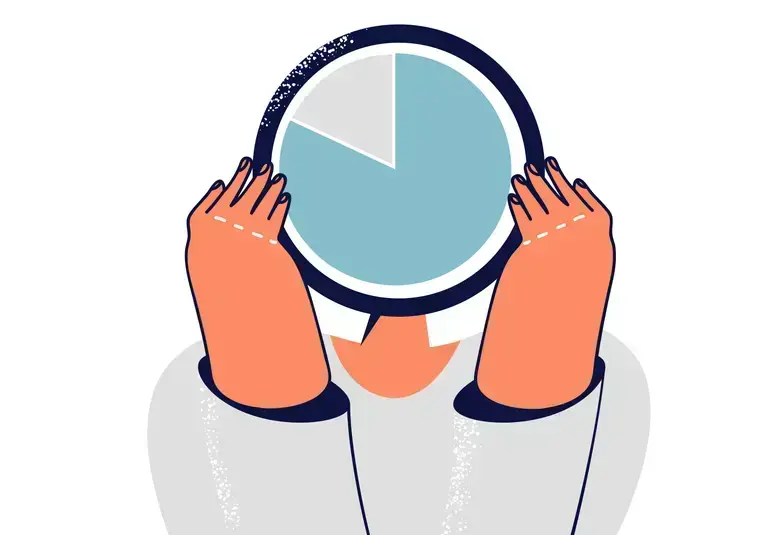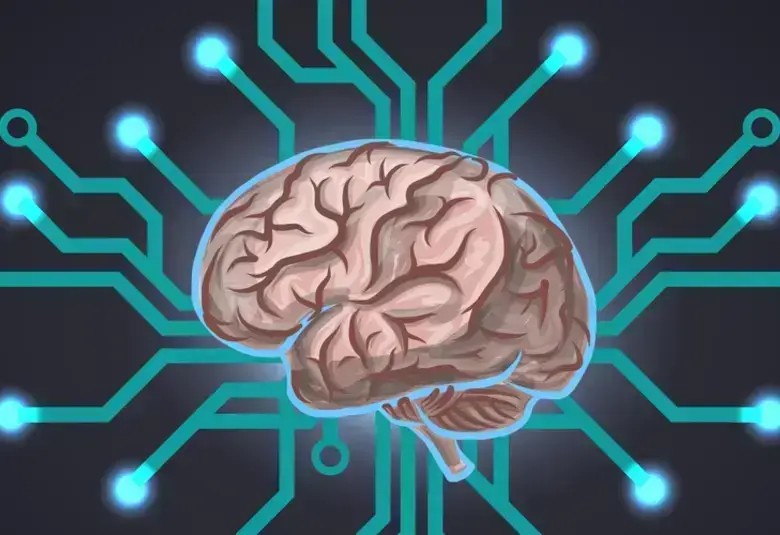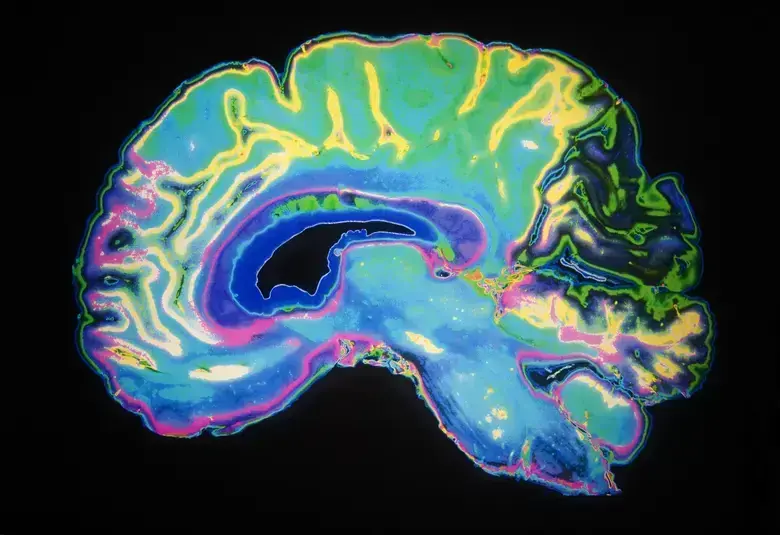Get on your running shoes if you want good mental health in later life – it’s never too late to start! Those were the messages coming from a highly informative and stimulating session entitled ‘Exercise and psychiatric disease: should patient take the challenge?’ that occurred during this year’s ECNP. But maybe it’s not just patients who need to start taking regular anaerobic exercise – it’s all of us!
노년기 건강한 정신을 원한다면, 운동을 시작하세요 – 시작하기에 너무 늦은 때는 없습니다! 이것은 올해 ECNP의 유익하고 흥미로웠던 '운동과 정신 질환: 환자는 도전해야 하는가?' 세션을 통해 전달된 메시지였습니다. 하지만 규칙적인 무산소 운동의 시작이 환자들만 필요한 것은 아닐 것입니다. – 우리 모두 운동이 필요합니다!
Where has the evidence supporting such claims emanated from? In the first part of the session Henriette van Praag, Maryland, USA, talked the audience through some of the exciting preclinical research that may help explain what’s happening.
이러한 주장을 뒷받침하는 근거는 어디에서 나온 것일까요? 미국 메릴랜드의 Henriette van Praag는 세션의 첫 파트에서 이를 설명하는데 도움이 될 수 있는 몇 가지 흥미로운 전임상 연구를 소개하였습니다.
Hippocampus – site of neurogenesis in adult
해마 – 성인에서 신경발생(neurogenesis)이 일어나는 부위
It has now been accepted that the hippocampus, an area critical for learning, is one site of neurogenesis present within the adult brain. Professor van Praag showed how, in animal models, running increases hippocampal neurogenesis and memory function.
최근에는 학습에 있어서 매우 중요한 부위인 해마가 성인의 뇌에서 신경발생이 일어나는 부위라는 것이 받아들여졌습니다. Van Praag 교수는 동물 모델에서 달리기가 어떻게 해마의 신경발생과 기억력을 향상시키는지 보여주었습니다.
Running enhances new neurogenesis and rewires neurocircuitry
달리기는 신경발생의 신생을 도모하고 신경회로를 재설계(rewiring) 합니다.
In a series of elegant experiments in animals, it was shown that environmental enhancement, particularly running, enhanced new neurogenesis. Running also enhanced learning and performance of hippocampal-dependent tasks. Closer inspection of the dentate gyrus, a region involved in pattern separation, also revealed that rats who were allowed to run in running wheels performed significantly better at intricate pattern separation tasks than sedentary animals.
일련의 정밀한 동물 실험을 통해, 환경적 강화, 특히 달리기가 새로운 신경발생을 향상시키는 것으로 밝혀졌습니다. 달리기는 학습 및 해마 의존적 과제의 수행능력 또한 향상시켰습니다. 패턴 분리에 관여하는 부위인 해마의 치상회(dentate gyrus)에 대한 더 자세한 연구 결과, 쳇바퀴에서 달릴 수 있는 랫드가 비운동성(sedentary) 동물에 비해 복잡한 패턴 분리 과제를 유의하게 더 잘 수행한 것으로 나타났습니다.
Such exercise expands entorhinal cortical input to new neurons that are involved with spatial and contextual memory. Thus, running rewires new neurocircuitry not solely in the hippocampus but also in the entorhinal cortex and the septum – all areas for learning and memory and those first affected by neurodegenerative diseases.
이러한 운동은 내후각 피질(entorhinal cortical)의 신호를 공간 및 맥락 기억과 관련된 새로운 뉴런으로 잘 전달합니다. 따라서 달리기는 해마 뿐 아니라 내후각 피질(entorhinal cortex)과 중격(setum), 즉 학습과 기억에 관련되며 신경퇴행성 질환에 의해 제일 먼저 영향을 받는 모든 부위에서 새로운 신경회로를 재설계(rewiring) 합니다.
Muscling in on cognition
달리기는 인지기능도 개선시킵니다.
Intriguingly, the benefits of exercise for cognition appear to originate from muscle. A search for factors released into the circulation by muscle homed in on the candidate molecule cathepsin B (CTSB). In mice, running increased CTSB levels both in muscle and in plasma and enhanced spatial memory. In knock out CTSB mice, however, there no enhancement in the spatial memory compared to normal controls. This suggests, therefore, that CTSB, a substance released from the muscle, may be partly responsible for a cognitive effect occurring in the brain.
흥미롭게도, 운동이 인지에 미치는 유익한 영향은 근육에서 비롯되는 것으로 보입니다. 한 연구는 근육이 신경회로로 분비하는 물질들을 조사하였으며, 특히 카텝신 B(cathepsin B, CTSB)라는 후보물질에 주목했습니다. 마우스의 경우, 달리기는 근육 및 혈장 모두에서 CTSB 수치를 높였고 공간 기억도 향상시켰습니다. 하지만, CTSB 녹아웃(knock out) 마우스에서는 정상적인 대조군과 비교하였을 때 달리기에 의해 공간 기억이 향상되지 않았습니다. 따라서, 이를 통해 근육에서 분비되는 물질인 CTSB가 뇌에서의 인지 효과를 일부 담당할 수 있음을 알 수 있습니다.
CTSB – mind-altering myokine
CTSB – 마음을 변화시키는 마이오카인 (myokine)
Furthermore, improved fitness in humans also correlated with increased plasma levels of CTSB and improved memory function in humans undergoing treadmill testing. Thus, the myokine, CTSB, is associated with memory function in both mice and humans.
뿐만 아니라, 신체를 단련한 사람에서 혈장 CTSB 수치가 높았으며, 트레드밀 테스트(treadmill testing)를 받는 사람에서 기억력 향상이 나타났습니다. 따라서 CTSB라는 마이오카인은 마우스와 인간 모두에서 기억 기능과 연관되어 있습니다.
Dr Kirk Erickson, Pittsburgh, USA, took the presentation one stage further by asking the provocative question – is memory decline inevitable with aging? In short, yes BUT there are things that can be done to decelerate the rate of decline. And one of them is to exercise.
미국 피츠버그의 Kirk Erickson 박사는 노화와 기억력 저하는 필연적인지에 대한 도발적인 질문을 던지며 프레젠테이션을 한 단계 더 진척시켰습니다. 간단히 말하면, 이것은 맞는 말이지만 저하의 속도를 늦출 수 있는 방법이 있으며, 그 중 하나는 운동을 하는 것입니다.
Less than 10% of us exercise sufficiently
충분한 운동을 하는 사람은 10%도 되지 않습니다
Exercise has widespread effects on the brain and moderate intensity exercise several days a week is sufficient for improving brain health. Unfortunately, compliance with exercising - trying to achieve 150 minutes aerobic exercise per week - in the adult population is poor. Less than 10% of us manage it.
운동은 뇌에 광범위한 영향을 미치며, 일주일에 며칠씩 중간 강도의 운동을 하면 뇌 건강을 개선할 수 있습니다. 하지만, 일주일에 150분 정도의 유산소운동을 하는 성인 인구는 상당히 적으며, 전체 인구의 10%도 되지 않습니다.
Even after the age of 60 years, starting to exercise is beneficial
60세 이후라도 운동을 시작하면 도움이 됩니다.
It’s never too late
너무 늦은 때는 없습니다
However, even after the age of 60 years, starting to exercise is not futile; even those who are sedentary can improve their cognitive function - as well as their muscle strength and aerobic capacity, of course! Results of a recent meta-analysis suggest that fitness training can also have beneficial effects on human cognition, particularly on tasks requiring executive control processing.
60세 이후에 시작하더라도 운동은 유익하며, 활동이 적은 사람도 운동을 통해 근력과 유산소 능력은 물론, 인지기능도 함께 향상시킬 수 있습니다. 최근의 메타 분석 결과는 체력 단련이 인간의 인지, 특히 실행 통제 처리(executive control processing)가 요구되는 일을 할 때에도 도움을 줄 수 있다는 것을 시사합니다.
Dr Erickson and his team took this one step further and described the findings from a 1-year study into whether aerobic exercise could increase hippocampal volume and, therefore, improve cognitive function in human subjects.Erickson 박사 팀은 이 결과를 한 단계 더 진전시켰으며, 1년간의 연구 결과인 유산소 운동이 해마의 용적을 증가시키며, 이로 인해 사람의 인지 기능을 개선할 수 있다는 점을 설명했습니다.
Aerobic exercise appears to reverse hippocampal volume loss in adults and improves memory
유산소 운동은 성인에서 해마의 용적 손실을 역전시키고 기억을 개선하는 것으로 보입니다.
Study subjects were strictly monitored and parameters for improvement were objectively measured during a series of clinical visits that regularly occurred during the study. A total of 120 patients were randomly assigned to moderate and aerobic exercise or to mild exercise training. The aerobic exercise training increased the volume of the anterior hippocampus by 2%, leading to improvements in spatial memory and reversed age-related loss in volume by 1-2 years, while in the control group hippocampal volume declined. Increased hippocampal volume was also associated with increased serum levels of BDNF.
시험대상자들은 엄격히 모니터링 되었, 연구기간 동안 병원을 정기적으로 방문하여 개선에 대한 지표들이 객관적으로 평가되었습니다. 총 120명의 환자가 중간 수준의 유산소 운동 또는 가벼운 운동 훈련에 무작위로 배정되었습니다. 유산소 운동을 한 환자들은 해마 전부(anterior hippocampus)의 용적을 2% 증가시킴으로써 공간 기억의 개선을 유도하고, 노화에 의한 손실을 1-2년만큼 역전시킨 반면, 대조군의 해마 용적은 감소하였습니다. 해마의 용적 증가는 또한 BDNF의 혈청 수치 증가와 관련이 있었습니다.
Sweat to expand your hippocampus
해마를 확장 시키려면 땀을 흘려야 합니다
Thus, aerobic exercise appears to reverse hippocampal volume loss in adults and improves memory – with potential long-term consequences for disease of the brain.
따라서 유산소 운동은 성인의 해마 용적 손실을 역전시키고 기억력을 개선하며, 뇌질환에 대해 장기적 효과를 나타낼 것으로 기대됩니다.
본 자료는 Global Lundbeck 의학부에서 선별한 학술대회 콘텐츠이며, 한국룬드벡의 의견과 다를 수 있습니다





